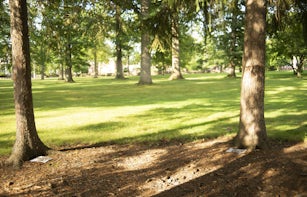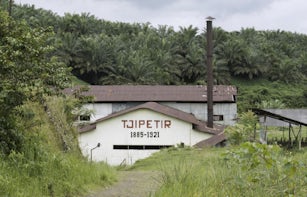
01On 20 October 1962, Priscilla Taylor, then director of the National Library of Singapore, wrote to the director of the Museum of Modern Art (MoMA), Rene d’Harnoncourt in New York and to the director of the United Service Information Service (USIS) Singapore requesting an exhibition from MoMA. 02 She had visited the ‘Visionary Architecture’ exhibition two years before in New York, and on the occasion of a seminar on urban development organised by the United Nations, wanted to exhibit it in Singapore. The ambitious request of this seemingly innocent letter would send the National Library Board and MoMA both into a scramble over the following months, seeing the MoMA revise its travel plans and delay the exhibition.03
While Taylor only remembered the city planning aspect, the exhibition curated by Arthur Drexler, director of the MoMA’s Department of Architecture and Design, presented theoretical designs that addressed critical issues for social change, development and sustainability on a global scale and showcased twentieth-century speculative, unrealised, architecture projects. 04 For example, Kiyonori Kikutake’s Marine City (1958) addressed the issue of population growth by imagining cities built in the ocean, while Frank Lloyd Wright’s Mile-High Illinois (1956) proposed a towering building that could house all of Manhattan, leaving the surrounding area free for parks. Significantly, Taylor did not simply request the exhibition be reinstalled but rather asked that other suitable material be suggested as it was important to her to have material from the MoMA so that the National Library Board could ‘participate in some way in [its] travelling exhibitions scheme’. 05 This request to include material such as books from the MoMA illustrated Taylor’s agency to prescribe how the MoMA’s travelling exhibition would be realised in Singapore and thus, represents how she was able to actively participate in MoMA’s travelling exhibition scheme. Rather than the exhibition being literally sent to Singapore and installed as per the MoMA’s instructions, Taylor had the agency to mediate this process.
However, by January 1963, the United Service Information Agency (USIA) in Washington, which generally supported the travel of the MoMA’s exhibition internationally, had deemed ‘Visionary Architecture’ a not ‘useful’ exhibition as it did not show any buildable projects in current society and did not represent enough American architects to serve American interests – though their local Singapore office did later supply nelson stands for the installation. ‘Visionary Architecture’ would only be presented later, from 18 March to 9 April 1963, with Singapore government funding and in dialogue with the exhibition ‘Housing in Singapore’, which featured new housing projects from the estates of Selegie and Queenstown and was funded by the recently established Housing Development Board (HBD).The exhibition shown at the National Library Singapore was attended by 7,368 architects, builders, constructors, students and other visitors as well as representatives from industry and commerce, art societies and cultural bodies. The display designed by Singapore-based architects smoothly channelled people between exhibitions, revealed in documentation photos sent to MoMA as part of the evaluation report in a trail across that connects them as one exhibition. In that same report Taylor mentioned that local television programmes associated Lloyd Wright’s Mile-High Illinois with the public housing being built in Singapore, a oneness further corroborated in the press, with local newspapers such as the Straits Times calling the exhibition(s) ‘Visionary Architecture and Housing’.06
The speculative projects of an international modernism and the realism of Singapore’s modern public housing became part of the same ‘modern’ equation. The latter was articulated at the opening when then Minister for Culture Sinnathamby Rajaratnam stated:
‘Visionary Architecture’ shows the dreams of genius, the ideal cities, the ideal environment, the beauty, the joy of artists unfettered by considerations of everyday reality; ‘Housing in Singapore’ shows vision, attempts an ideal, overcomes difficulties and achieves a reality that is beautiful, imaginative and joyous… the Housing Development Board’s estates share with the architects from other counties the necessity, the urgency of the problem of relating man to his environment; to provide opportunity to work, to raise children, to observe religious festival, to use leisure time well and to be good citizens.07
Showcased alongside the MoMA show, Singapore’s public housing initiatives appeared to be among the ambitious architectural projects that sought to remake the world. Singapore had not yet formed as a nation and was still a colony of the British crown with internal self-governance from 1959 and therefore engaged in the process of decolonialising. It only became a city-state after joining the Federation of Malaysia in September 1963 and gained its full independence in 1965. By associating local housing projects with innovative international architectural projects, Singapore could position itself as part a global architectural avant-garde. 08 The political efficiency of this gesture for the People’s Action Party (PAP), which had won the 1959 election – its leader Lee Kuan Yew would become the first prime minister of Singapore – cannot be understated. The work of the HDB to address Singapore’s housing issue was a cornerstone of this new government. Thus, ’Visionary Architecture’ as a representation of international modernity was used as much to map the city-state onto contemporary world history as to further national and local political aims of the new non-Western government.
But within the region, the co-optation of a MoMA exhibition was not unprecedented: the exhibition ‘Recent American Prints in Colours’ travelled to Manila in 1957 as part of the ‘First Southeast Asia Art Conference and Competition’, the first exhibition of Southeast Asian Art in the region after World War II. Heralded by the Philippine press as the biggest foreign participation in art in the East to date, the event set a precedent for the Philippine art scene and the communities it sought to map and with which to build regional ties. 09 Consisting of twenty-five prints by Walter Lieberman that represented print making as an American innovation, ‘Recent American Prints in Color’ was presented as the United States’ contribution to the exhibition organised by the Art Association of the Philippines (AAP), a local association of artists, critics, patrons and enthusiasts. The inclusion of the exhibition was made by Filipino artists rather than by the USIS or the MoMA. 10 Further, this decision to incorporate ‘Recent American Prints in Color’ in the one-room exhibition’s explicitly embodied the works that had travelled from the US within the exhibitionary frame of ‘Southeast Asia’, almost occluding the MoMA. After being sent a report that included a publication and an image of the exhibition on 28 May 1957, MoMA’s International Program director Porter McCray wrote to the USIS officer in Manila who was facilitating the exhibition’s travel: ‘Although the catalog makes no reference to it, I hope that it was possible during the exhibition itself to retain proper identification of The Museum of Modern Art as the organiser of Recent American Prints in Color.’ 11 The MoMA’s exhibition and its representation of American innovation had been subsumed into Southeast Asia and equivocated as on par with artistic development in Australia, China, India, Indonesia, Malaya, Thailand, Vietnam and the Philippines.12
While ‘Visionary Architecture’ and ‘Recent American Prints in Color’ are footnotes in the history of the MoMA’s travelling exhibitions, they also show that the MoMA’s exhibitions during the Cold War were not merely defined by an American agenda or that American propaganda won ‘hearts and minds’. Local actors had agency in appropriating and reshaping resources offered by aid and cultural exchange programmes to realise their own aspirations. Cultural exchange around exhibitions was not just about the representation of artistic narratives or ideologies in this period, but also about the negotiation of practical parameters in realising these exhibitions as a medium through which one could assert one’s own sovereignty. If anything, ‘Visionary Architecture’ in 1963 Singapore and ‘Recent American Prints in Colour’ in 1957 Manila show that exhibitions ‘appropriated’ by Southeast Asians tell us more about how Southeast Asian artists and actors imagined a modern international art world and their place within it. Through their co-optation of MoMA exhibitions, these Southeast Asians defined international modern art and architecture rather than the West, challenging preconceived notions of ‘modern art’ as a wholly Western construct.13





